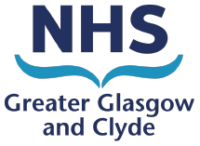Guidelines are divided into 4 sections:
Core Prevention Guidelines (includes SICPs)
National Infection Prevention and Control Manual
Cleaning of Near Patient Equipment
(All appendix documents in WORD to facilitate ward specific cleaning schedule)
- Appendix 1 – Reference Guide/Poster: Daily / Weekly Checklist
- Appendix 2 – Weekly Cleaning Assurance Checklist
- Appendix 3a – Bed Space Checklist
- Appendix 3b – Bed Space Checklist Monthly
- Appendix 4 – Bed Space Checklist for Critical Care Areas
- Appendix 5 – Daily Bed Space Checklist for high turnover areas
- Appendix 6 – A&E Checklist
- Appendix 7 – Resuscitation ED Checklist
- Appendix 9 – AHP OPD Checklist
- Appendix 9a – AHP Female OP Checklist
- Appendix 9b – AHP OP Gym Checklist
- Appendix 10a – Bed Space Checklist for Neonatal Units
- Appendix 10b – Bed Space Checklist for Neonatal Units
- Appendix 11 – Bed Space Checklist for Mental Health In-patient Services
- Appendix 12a – Bed space Checklist for MSK Out patients Physiotherapy
- Appendix 12b – Weekly Assurance Checklist for MSK Out Patients Physiotherapy
- Phlebotomy Trolley Cleaning SOP
- Cleaning of Near Patient Equipment SOP
Decontamination Guidance
Hand Hygiene Guidance
Outbreak Incident Management Plan
Patient Placement
Terminal Clean of Ward/Isolation Room
TOY Cleaning
Twice Daily Clean of Isolation Rooms
Water Damage
Disease Specific Information
Chickenpox
Clostridium difficile Infection (CDI)
COVID-19
- COVID-19 Ward Outbreak Leaflet
- COVID-19 health protection guidance for Scotland
- COVID-19 Fact Sheet
- Guidance for Health Protection Teams
- WossVC-RA-064 Risk LIAT Flu POCT
- POCT-WI-20 LIAT Flu POCT procedure (clinical area)
- Amended Virology Report
- Appendix 19 National IPC Manual COVID-19 Pandemic IPC Controls for Health and Social Care Settings
CPE (Carbapenemase Producing Enterobacteriaceae)
NHSGGC Resources
- CPE SOP
- CPE Aide Memoire
- CPE Care Checklist
- CPE Screening Process – Adults & Children
- CPE Sticker (4)
- CPE Sticker (6)
Educational Resources
Staff can undertake a NES LearnPro module on CPE and MRSA Screening by logging into the LearnPro NHS website here.
National Resources
Creutzfeldt-Jakob disease (CJD)
Gastrointestinal Diseases
- Enteric Infections Care Checklist
- Loose Stools (of unknown origin) / Gastroenteritis Care Checklist
- Campylobacter Patient Information Leaflet
- Cryptosporidium Patient Information Leaflet
- E-coli 0157 Patient Information Leaflet
- Norovirus Patient Information Leaflet
- Salmonella Patient Information leaflet
Group A Streptococcus (Strep. pyogenes)
Head Lice
Influenza
Loose Stools
NHSGGC Bowel Movement Record (Bristol Stool Chart)
Meningococcal Disease
Meticillin Resistant Staphylococcus Aureus (MRSA)
Middle East Respiratory Syndrome Coronavirus (MERS-CoV)
What is MERS-CoV?
MERS-CoV is a viral respiratory disease. It is a strain of coronavirus first identified by the Netherlands in 2012. Symptoms include fever and cough that progress to a severe pneumonia causing shortness of breath and breathing difficulties. In some cases, a diarrheal illness has been the first symptom to appear. There is currently no vaccine available for MERS-CoV.
Since April 2014, there has been a marked increase in reported infections with MERS-CoV outside the UK. There continues to be a risk of imported cases to the UK, and health professionals should remain vigilant. Early identification and rapid implementation of appropriate infection control measures for suspected cases is crucial.
While the risk of MERS-CoV in individuals who meet the case definition for a possible case in the UK following travel to/from the Middle East is low, testing for MERS-CoV is warranted together with rapid implementation of appropriate infection control measures while awaiting results of testing.
Guidance for the public health management of MERS-CoV infections
NHSGGC MERS-CoV Hospital Pathways:
NHSGGC Reception/Triage posters:
- MERS Pathway: Telephone Triage – Acute Oncology Assessment Unit
- MERS Triage Nurse Signage
- MERS Poster – English/Arabic
Health Protection Scotland Guidance
Patient Assessment: Assessment and initial management of travellers presenting with febrile respiratory illness, returning from an area where infection with MERS-CoV could have been acquired in the 14 days before symptom onset.
Close Contacts: The risk to contacts of confirmed cases of MERS-CoV infection is low but contacts should be followed up in the 14 days following last exposure and any new febrile or respiratory illness investigated urgently for MERS CoV.
National Infection Control Guidance
(Information (HPS) can be found here) including information for healthcare workers.
A precautionary principle must be applied for novel or emerging respiratory pathogens of high consequence when the mode of transmission is incompletely determined.
Droplet, contact and airborne precautions (including the use of correctly fitted FFP3 respirators) should be applied for all patients admitted with a suspected or confirmed novel or emerging respiratory pathogen (e.g. MERS-CoV or Avian Influenza).
The link below, outlines the infection prevention and control advice for healthcare workers involved in receiving and caring for patients, who are suspected or confirmed cases of MERS-CoV.
Multi-drug Resistant Organisms (MDRO)
Norovirus
- Norovirus Guidance
- Norovirus Aide Memoire
- Norovirus Outbreak Daily Checklist
- Norovirus Outbreak Data Record for Ward
- Norovirus Patient Information Leaflet
- Bowel Movement Record (Bristol Stool Chart)
- Loose Stools Care Checklist
- Outbreak sign for door
- Outbreak Presentation for Clinical Staff
- Outbreak Presentation for Domestic Staff
- HPS – General Information to Prepare for and Manage Norovirus in Care Settings
- HPS Website – Norovirus
Respiratory Syncytial Virus (RSV)
Scabies
Shingles
Tuberculosis
Whooping Cough (Pertussis)
Linked Policies / Associated Policies
Water Safety
This is where you find our information and resources concerning water safety.
The SOP below and risk assessment provide direction and guidance for ward based staff, to meet their responsibilities for the control of risks associated with water systems in NHS premises.
These documents should be read in conjunction with the Board Water Systems Safety Policies and written schemes.
